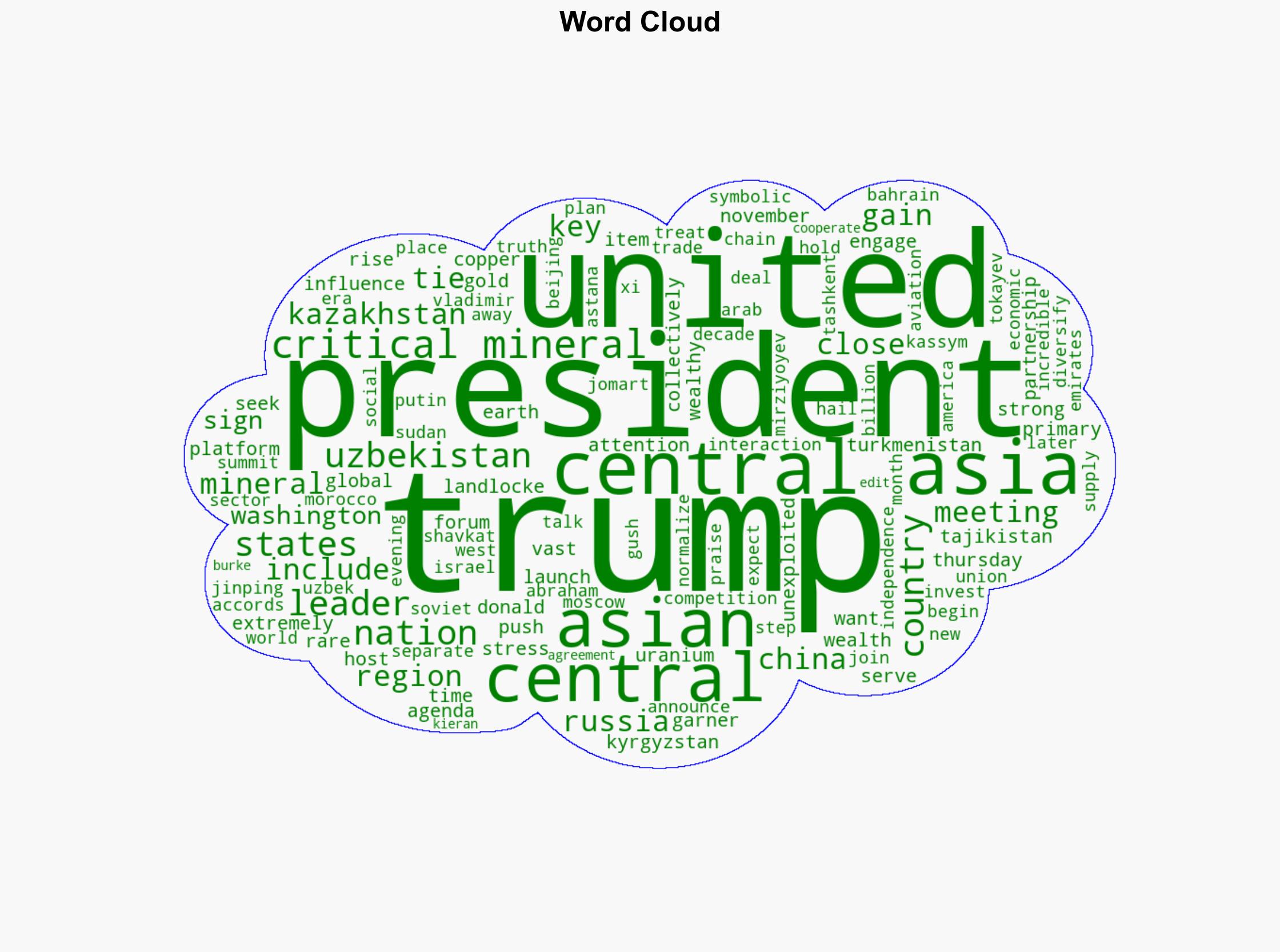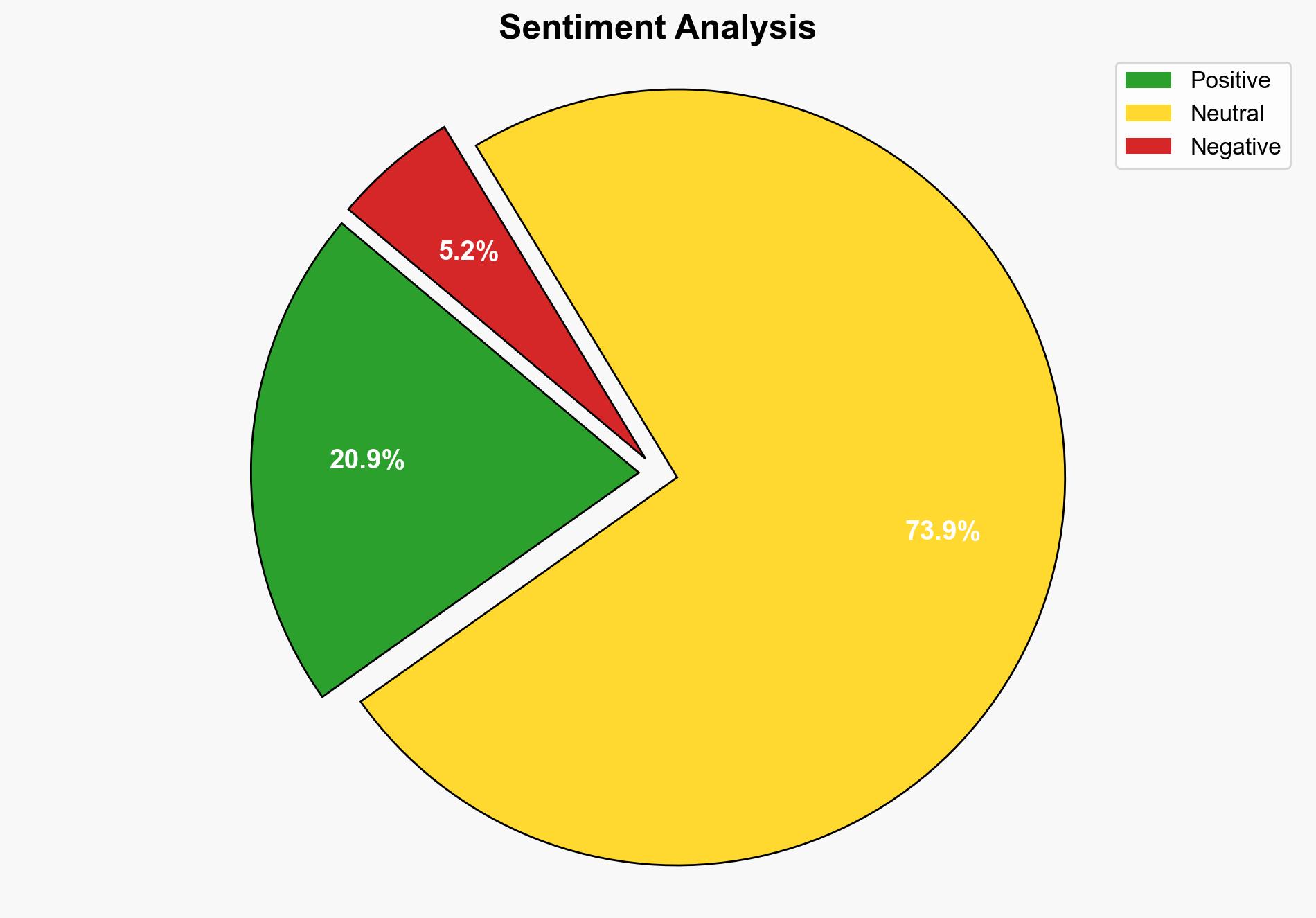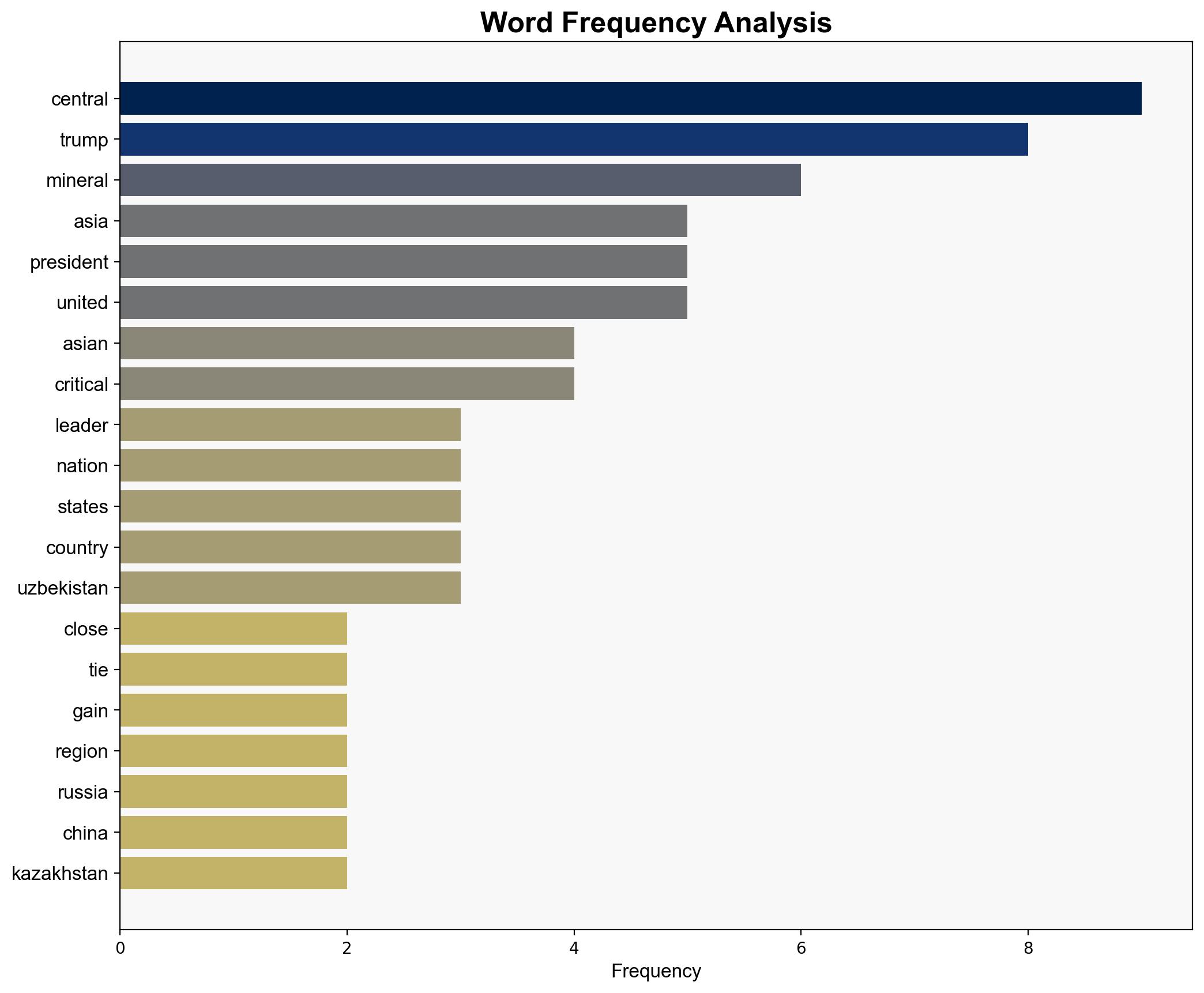Trump pushes for closer mineral ties with Central Asia – DW (English)
Published on: 2025-11-07
Intelligence Report: Trump pushes for closer mineral ties with Central Asia – DW (English)
1. BLUF (Bottom Line Up Front)
The most supported hypothesis is that the United States, led by Donald Trump, is strategically positioning itself to counterbalance Russian and Chinese influence in Central Asia by strengthening economic ties through critical mineral agreements. Confidence level: Moderate. Recommended action: Enhance diplomatic engagement and economic incentives to secure long-term partnerships with Central Asian countries.
2. Competing Hypotheses
1. **Hypothesis A**: The primary objective of Trump’s initiative is to establish a strategic foothold in Central Asia to counter Russian and Chinese influence, leveraging the region’s mineral wealth as a tool for geopolitical influence.
2. **Hypothesis B**: The initiative is primarily economically driven, focusing on securing critical mineral resources to diversify supply chains away from Russia and China, with geopolitical benefits being a secondary consideration.
Using the Analysis of Competing Hypotheses (ACH) 2.0, Hypothesis A is better supported due to the timing of the meetings following summits with Russia and China, and the symbolic gestures like Kazakhstan joining the Abraham Accords, indicating a broader strategic alignment.
3. Key Assumptions and Red Flags
– **Assumptions**: It is assumed that Central Asian nations are willing to pivot towards the U.S. despite historical ties with Russia and China. Additionally, it is assumed that economic incentives alone can shift geopolitical alignments.
– **Red Flags**: The absence of detailed agreements or commitments from Central Asian leaders could indicate hesitation or strategic hedging. The reliance on public statements without corroborating evidence of mineral deals is a potential blind spot.
4. Implications and Strategic Risks
– **Geopolitical Risks**: Increased U.S. presence in Central Asia could escalate tensions with Russia and China, potentially leading to retaliatory measures or increased regional instability.
– **Economic Risks**: Over-reliance on Central Asian minerals without secure agreements could lead to supply chain vulnerabilities if political dynamics shift.
– **Cyber and Psychological Dimensions**: Potential for cyber operations by adversaries to disrupt U.S. initiatives or influence public perception in Central Asia.
5. Recommendations and Outlook
- Enhance diplomatic efforts to solidify commitments from Central Asian leaders, ensuring long-term cooperation.
- Develop contingency plans for potential Russian or Chinese countermeasures, including economic and cyber responses.
- Scenario Projections:
- Best Case: Successful establishment of U.S. influence, leading to diversified mineral supply chains and reduced Russian/Chinese dominance.
- Worst Case: Escalation of regional tensions, leading to economic sanctions or conflicts impacting global markets.
- Most Likely: Incremental progress with mixed outcomes, requiring sustained diplomatic and economic engagement.
6. Key Individuals and Entities
– Donald Trump
– Kassym-Jomart Tokayev
– Shavkat Mirziyoyev
– Vladimir Putin
– Xi Jinping
7. Thematic Tags
national security threats, economic diplomacy, geopolitical strategy, regional focus





